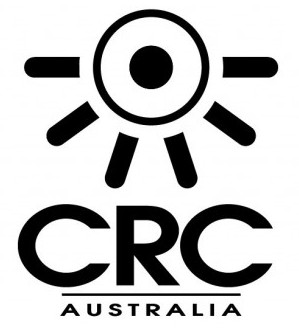Tony Peacock, Biggest changes to CRC Programme in quarter of a century, linkedin.com, 11 Jan 2016
 The Cooperative Research Centres Programme has changed the landscape for R&D in Australia. The programme was proposed and instigated during the “Clever Country” reforms of the Hawke Government. The results have been widespread and large – the only programme whose impact on the Nation’s Gross Domestic Product has been demonstrated so comprehensively.
The Cooperative Research Centres Programme has changed the landscape for R&D in Australia. The programme was proposed and instigated during the “Clever Country” reforms of the Hawke Government. The results have been widespread and large – the only programme whose impact on the Nation’s Gross Domestic Product has been demonstrated so comprehensively.
Now, a quarter of a century on and the Innovation Minister, Christopher Pyne, has announced significant changes to the rules governing the CRC Programme. The introduction of CRC-Ps will see the programme more fit-for-purpose for the new “IdeasBoom”.
For some people involved in the innovation scene, a Cooperative Research Centre was an unobtainable dream. Seven years of assured and significant government funding, matched by industry meant that most CRCs are $80 to $200 million plus enterprises. They can take on major challenges that are impossible under most other programmes.
It’s time to rethink your perception of what constitutes a CRC. Under the revised guidelines, a collaboration taking on a major challenge or opportunity is still the centrepiece. The centres are now up to 10 years in duration, non-renewable and the requirement for industry leadership is taken up a notch (as it has in each of the five major reviews of the programme). The renewed industry leadership and the new CRC-Projects means CRCs in the future will look different to the past.
For example, the new Industry Growth Centres might see a big opportunity for their particular sector and develop a CRC to address it. I could foresee, say, a Growth Centre sponsoring development of a CRC to maximise use of new free trade agreements. I’ve had more imaginative proposals run past me in the past month than ever before, with quite different business models for CRCs. The Government has put the ball squarely in industry’s court.
The CRC-Ps are a whole new ballgame.
They’ll require at least two industry entities and a research provider. They are up to $3 million over $3 years but might be considerably smaller. I’ve had several people ask me “what makes them different to an ARC Linkage grant?” I think they’ll be at a more advanced, more commercial stage of development and with simpler paperwork (I hope). I think they will have a higher level of “ownership” by the companies involved. In general, I think Linkage grants will continue that vital role of being a link between academia and industry whereas CRC-Ps will be a more company-led collaboration on a challenge.
The guidelines remain in public service-speak, being the formal mechanism for the Minister signing them off. The actual forms will come out in February and probably be more straightforward. But here is a summary of some of the issues.
- Stage One of a CRC application is now a simple process. The comprehensive budget, details of the activities and the Impact tool are all put off until Stage Two. I think this will open the programme up to more participants.
- CRC-Ps will go through a single stage assessment process.
- There are six selection criteria for both CRCs and CRC-Ps but they are NOT equally weighted. The first two carry 30% weight, and 10% each for the last four: (1) Industry Outcomes; (2) Activities; (3) Governance; (4) Education; (5) Value for money and (6) National benefits.
- CRC Programme funds cannot be used to reimburse Participants for the indirect support costs of staff employed by the participant. In other words, Research Providers will not be able to charge the collaboration a “multiple” of staff costs – a source of angst for many companies in the past.
- IP is a matter for each CRC or CRC-P. There is nothing stopping the CRC or CRC-P deciding that a commercialising participant could own all the IP from certain projects. Whatever works best to get it used.
Does this mean the end of “public good” CRCs?
The guidelines make no distinction between “public” and “private” good. They are written in terms of “industry impact”. Certainly commercialisation is emphasized and the leadership role is given to “industry entities” (being an entity whose majority income does not come from any government and is not a research organisation or a body with the primary function of administering a CRC-P). In the most recent review of CRCs David Miles commented carefully on the issue of “public good”, saying, in part:
The review recognises government support for the CRC Programme is for the benefit of the public. Whether a collaboration is focused on growing Australian businesses, developing environmental solutions, or improving health outcomes, each has benefits for the taxpayer, and therefore is a ‘public good’.
CRC Programme funding inherently delivers public good by enabling industry-focused research on key issues. There is no need for a separate mechanism and therefore the priority public good funding mechanism should be discontinued.
It is now up to the new CRC Advisory Committee to implement the new guidelines and recommend CRCs and CRC-Ps to the Minister. Anyone that has listened to Chairman of that group, Philip Marcus Clark speak at recent consultation meetings will be in no doubt about his views. Philip could not have been clearer that he believes his task is to identify and recommend those proposals likely to have the greatest impact. If you think you can create impact through innovation, you should consider participating in the CRC Programme.

